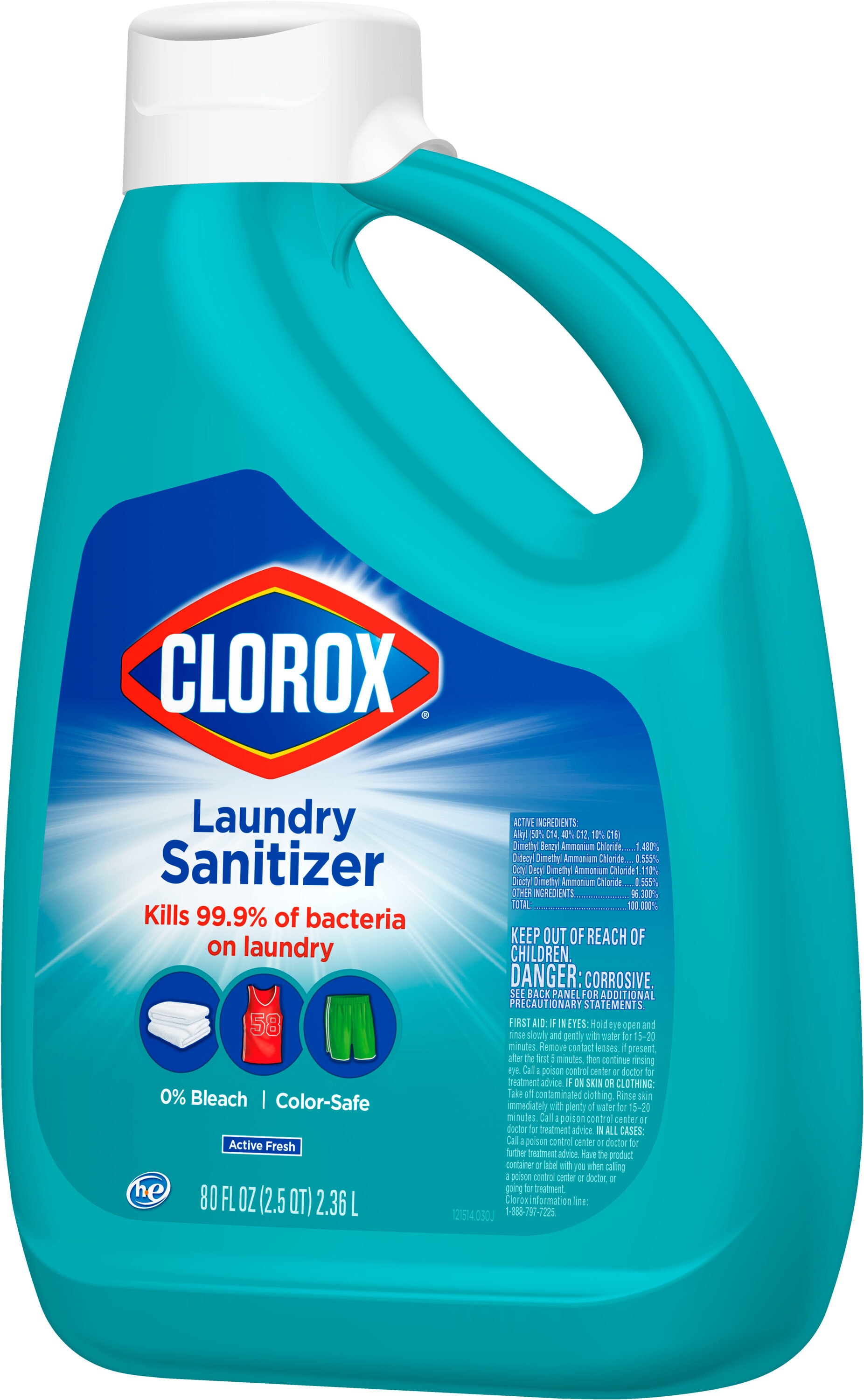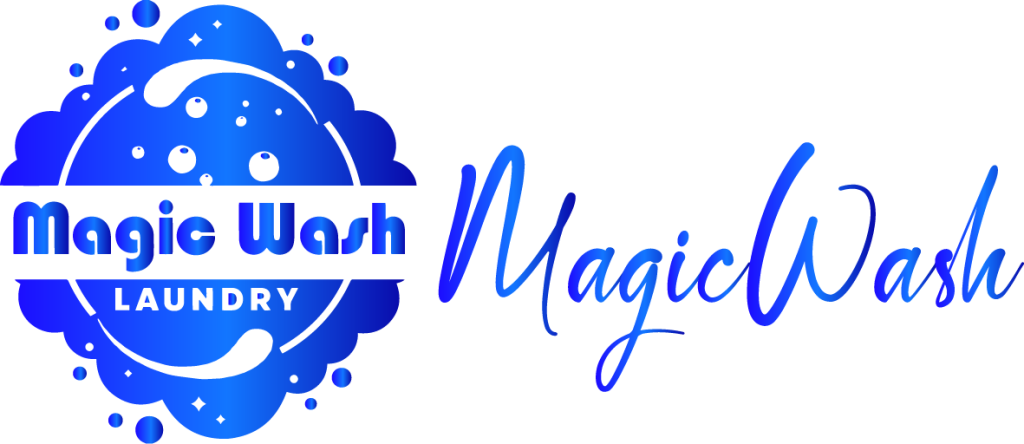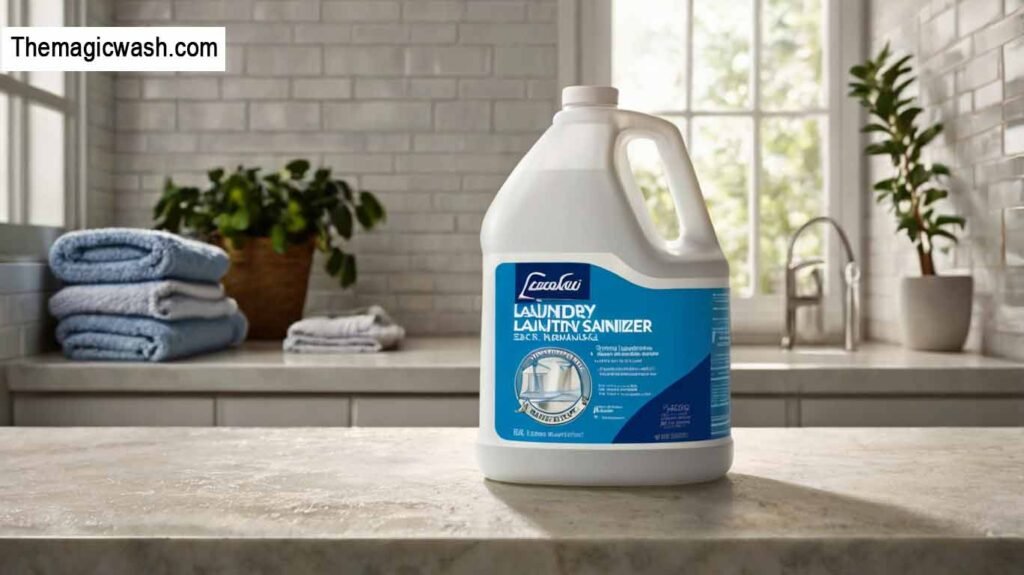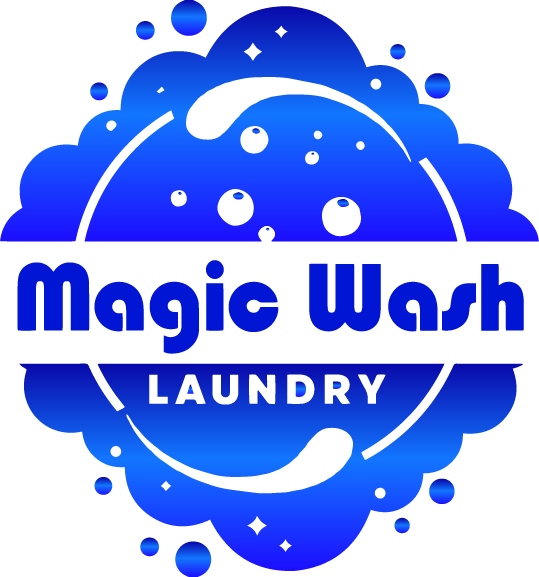Laundry sanitizer is essential for keeping your clothes clean and safe. It helps eliminate germs and bacteria that regular washing may miss.
In today’s world, cleanliness is more important than ever. Laundry sanitizer provides an extra layer of protection for your garments. It effectively kills harmful germs and prevents the spread of illness. Many people do not realize that washing clothes alone may not be enough to ensure complete cleanliness.
Even after a wash, some bacteria can survive. Using a laundry sanitizer can help you achieve a deeper clean. It is especially useful for items like towels, bedding, and workout clothes. Understanding how and when to use laundry sanitizer can help keep your family healthy and your clothes fresh.
Laundry Sanitizer
The Rise Of Laundry Sanitizers
In recent years, the focus on cleanliness has grown. People care more about hygiene than ever. This change has led to the rise of laundry sanitizers. These products help kill germs and bacteria on clothing. They add an extra layer of protection. Understanding their importance is key.
Shift In Hygiene Practices
Hygiene practices have changed a lot. More people now wash their clothes regularly. They want to ensure their clothes are clean and safe.
Here are some reasons for this shift:
- There has been an increased awareness of germs and bacteria.
- Health concerns linked to dirty laundry.
- The influence of global health events is significant.
These factors push people to look for better cleaning solutions. Laundry sanitizers fit perfectly into this trend. They are simple to use and effective. Just add them to your wash cycle.
Why Germ-free Clothing Matters
Germ-free clothing is important for several reasons:
- Health benefits include a reduction in the risk of infections.
- Comfort: Clean clothes feel fresh and pleasant.
- Confidence: Wearing clean clothes boosts self-esteem.
Many people do not realize how dirty clothes can be. Studies show that laundry can harbor bacteria. This is especially true for:
| Type of Clothing | Common Germs |
|---|---|
| Underwear | E. coli |
| Towels | Staphylococcus |
| Gym Clothes | Fungi |
Using a laundry sanitizer can help eliminate these germs. It ensures that your clothes are truly clean. This is vital for your health and well-being.
Types Of Laundry Sanitizers
Choosing the right laundry sanitizer is essential. Different types serve different needs. Some people prefer chemical options. Others opt for natural alternatives. Here’s a closer look at the two main categories.
Chemical-based Options
Chemical-based laundry sanitizers are popular for their effectiveness. They often contain strong disinfectants. These help kill germs and bacteria. Common chemical sanitizers include:
- Chlorine bleach
- Hydrogen peroxide
- Quaternary ammonium compounds
Chlorine bleach is a well-known sanitizer. It works well on whites but can damage colors. Hydrogen peroxide is safer for colors. It’s effective against a wide range of germs. Quaternary ammonium compounds are mild and suitable for many fabrics.
Natural And Eco-friendly Alternatives
Many people prefer natural sanitizers. These options are gentler on fabrics. They are also better for the environment. Here are some popular choices:
- White vinegar
- Baking soda
- Essential oils
White vinegar can kill some bacteria. It also helps remove odors. Baking soda is another excellent option. It freshens laundry and boosts cleaning power. Essential oils like tea tree oil have natural antibacterial properties.
Natural options may take longer to work. They may not be as powerful as chemical sanitizers. Choose based on your needs and preferences.
Effective Use Of Laundry Sanitizers
Laundry sanitizers help eliminate germs and bacteria from your clothes. They are a beneficial addition to your laundry routine. Using them correctly ensures your laundry is fresh and safe. Follow these tips for the best results.
Reading Labels Correctly
Always check the label on your laundry sanitizer. It provides important information. Look for the recommended dosage. Using too much can leave residue. Using too little may not sanitize effectively.
Check for compatibility with fabrics. Some sanitizers are not safe for all materials. Pay attention to any warnings on the label. This helps prevent damage to your clothes.
Best Practices For Different Fabrics
Different fabrics need special care. For cotton, you can use most sanitizers safely. They work well in hot or warm water.
For delicate fabrics, choose a gentle sanitizer. Cold water is best to protect these materials. Always perform a patch test first.
Synthetic fabrics can handle most sanitizers too. Just make sure to follow the label instructions. This keeps your clothes looking new.
Sportswear often needs extra care. Use a sanitizer designed for activewear. It helps remove sweat and odors effectively.

Credit: www.target.com
Benefits Of Sanitizing Laundry
Sanitizing laundry is not just about cleanliness. It provides many health and practical benefits. Keeping clothes free from germs improves your health and the life of your fabrics.
Preventing Illness
Sanitizing laundry helps to kill harmful germs and bacteria. This is especially important for:
- Bed linens
- Towels
- Underwear
- Clothing worn during illness
Germs can easily spread through dirty laundry. Regularly sanitizing keeps your family safe from:
- Colds
- Flus
- Stomach viruses
Using a laundry sanitizer can reduce the risk of infections. This is crucial for households with children or elderly members.
Extending Fabric Lifespan
Sanitizing laundry can also help fabrics last longer. Here are some benefits for your clothes:
- Removes tough stains
- Reduces odors
- Prevents discoloration
Sanitizer-treated fabrics often maintain their original appearance. They resist wear and tear better than untreated clothes.
Using sanitizers can be part of your regular wash routine. This keeps your clothes fresh and in excellent shape over time.
DIY Laundry Sanitizer Solutions
Keeping laundry clean is essential. Sometimes, regular detergent isn’t enough. DIY laundry sanitizer solutions can help kill germs and bacteria. These solutions are easy to prepare and utilize common household items.
Homemade Recipes
Making your own laundry sanitizer is easy. Here are a few effective recipes:
- White Vinegar: Add 1 cup of white vinegar to your rinse cycle. This helps kill bacteria and freshen clothes.
- Baking Soda: Mix 1 cup of baking soda with your laundry detergent. It boosts cleaning power and fights odors.
- Lemon Juice: Add 1 cup of lemon juice to your wash. It acts as a natural disinfectant and brightens whites.
- Essential Oils: Add 10-15 drops of tea tree oil or lavender oil to your wash. These oils have natural antibacterial properties.
Safety And Efficacy
Safety is important when using homemade sanitizers. Here are a few tips:
- Always test a small fabric area first.
- Do not mix vinegar and bleach. This creates harmful fumes.
- Store homemade solutions in labeled containers.
These homemade options work well. Research shows vinegar and baking soda kill many germs. Essential oils also help reduce bacteria.
| Ingredient | Benefits |
|---|---|
| White Vinegar | Kills bacteria and removes odors |
| Baking Soda | Boosts detergent effectiveness |
| Lemon Juice | Naturally disinfects and brightens |
| Essential Oils | Adds fragrance and fights germs |
Using these solutions can help you maintain a clean and safe laundry routine. They are effective and simple to use. Keep your clothes fresh and germ-free with these simple recipes.

Credit: www.amazon.com
Choosing The Right Laundry Sanitizer
Selecting the right laundry sanitizer is essential for clean clothes. It helps kill germs and bacteria. This choice affects your laundry’s freshness and safety. Consider your needs and preferences before buying.
Factors To Consider
First, think about the type of fabric you wash. Some sanitizers are safe for all fabrics. Others work best on specific materials. Always check the label for compatibility.
Next, consider the scent. Some people prefer unscented products. Others enjoy fresh fragrances. Choose what feels best for you and your family.
Look at the concentration of active ingredients. Higher concentrations may require less product. This can save you money in the long run.
Check for any allergens or harmful chemicals. Choose a sanitizer that fits your family’s needs. A gentle formula is often safer for sensitive skin.
Lastly, think about your washing machine type. Some sanitizers work well in high-efficiency machines. Others may not be suitable. Always read the product instructions for best results.
Product Comparisons
Compare different brands and types of laundry sanitizers. Some popular options include liquid, powder, and pods. Each type has unique benefits.
Liquid sanitizers mix easily with water. They are excellent for all loads. Powdered options may be more cost-effective. They last longer on the shelf.
Pods offer convenience. They are pre-measured and simple to use. However, make sure to keep them away from children.
Read reviews to find the best products. Look for feedback on effectiveness and scent. This helps you make an informed choice.
Check the price per load. Some products may seem cheap but require more sanitizer. A higher-priced option may save money in the end.
Common Misconceptions About Laundry Sanitization
Many people have questions about laundry sanitization. They often believe things that may not be true. Understanding these myths helps keep clothes clean and safe. Here, we will bust some common myths.
Myth Busting
Here are some myths about laundry sanitization:
- Myth 1: Regular detergent is enough for sanitization.
- Myth 2: Hot water is always necessary for killing germs.
- Myth 3: All laundry sanitizers are the same.
- Myth 4: You only need sanitizer for dirty clothes.
Let’s break these down:
- Regular detergent cleans but doesn’t always kill germs.
- Hot water can help, but not all germs need it.
- Different sanitizers work in different ways.
- Even clean clothes can have germs. Sanitizing helps.
Real Vs. perceived Germ Threats
Not all germs are harmful. Some are beneficial for us. Here’s a quick look:
| Type of Germ | Effect on Health |
|---|---|
| Pathogenic Germs | Cause illness |
| Beneficial Germs | Help digestion |
| Neutral Germs | No effect |
Most laundry sanitizers target harmful germs. They do not affect beneficial ones. Understanding this helps you use sanitizers wisely. Choose the right product for your needs.

Credit: www.lowes.com
Integrating Laundry Sanitizers Into Routine
Using laundry sanitizers can help keep clothes fresh and clean. They kill germs and bacteria that regular detergents might miss. Here’s how to make laundry sanitizers a part of your washing routine.
Creating Habits
Start by adding laundry sanitizer to your wash routine. This simple step can make a big difference.
- Choose a specific day for laundry.
- Always have sanitizer nearby your detergent.
- Mix sanitizer with your detergent in every load.
Set reminders on your phone. This will help you remember to include sanitizer. A consistent habit makes cleaning easier. Soon, it will feel natural.
Balancing Sanitization And Fabric Care
Find the right balance between cleaning and protecting your fabrics. Not all fabrics need harsh treatments. Follow these tips:
- Read labels on your clothes.
- Use sanitizer on items like towels and bed linens.
- Avoid using sanitizer on delicate fabrics.
Test a small area first when trying new products. This ensures your clothes stay safe. Monitor the wash temperature as well. Hot water can boost sanitization but may harm some fabrics.
| Fabric Type | Sanitizer Use |
|---|---|
| Towels | Recommended |
| Bedding | Recommended |
| Delicate Fabrics | Not Recommended |
| Activewear | Use Caution |
Following these tips helps you maintain both cleanliness and fabric quality. You can enjoy fresh laundry without damage.
Here are answers to your questions about laundry sanitizers:
1. What is laundry sanitizer and how does it work?
Designed to kill bacteria, viruses, and other pathogens that regular laundry detergents may not fully eliminate, laundry sanitizer is a product. It usually works by using powerful antimicrobial agents, such as benzalkonium chloride, to disinfect fabrics. While detergents clean by removing dirt and stains, laundry sanitizers target microorganisms and prevent the spread of germs.
When added to your laundry load, laundry sanitizers work by releasing these disinfecting agents that bond with fabrics and neutralize harmful microbes, leaving your clothes fresh and sanitized.
2. Is laundry sanitizer safe for all fabrics?
Generally, laundry sanitizers are safe for most fabrics, including cotton, polyester, and synthetics. However, it’s important to always check the label for fabric compatibility. Some sanitizers may be too harsh for delicate fabrics like silk or wool. To be cautious, test the sanitizer on a small, inconspicuous area of the fabric first to ensure it doesn’t cause any damage or discoloration.
3. How Often Should You Use Laundry Sanitizer?
The frequency of use depends on your needs and circumstances. Laundry sanitizer is typically recommended for:
- High-risk environments: If you work in healthcare, with children, or in any environment where germs are more likely, you might use it regularly.
- Items that come in direct contact with the body include bedding, towels, gym clothes, and undergarments.
- Heavy soiling or odors: for items with persistent smells or stained fabrics.
For most everyday laundry, you don’t need to use it every time. Using it a few times a month or for particularly soiled or contaminated items should be sufficient.
4. Can Laundry Sanitizer Eliminate Odors?
Yes, laundry sanitizer can help eliminate odors, particularly those caused by bacteria or mildew. It works by killing the odor-causing microbes, which are often responsible for lingering smells. Some laundry sanitizers even have added fragrances that help leave clothes smelling fresh.
5. What Ingredients Should You Look for in Laundry Sanitizer?
When choosing laundry sanitizer, look for
- Benzalkonium chloride: A common disinfectant that kills bacteria, viruses, and fungi.
- Hydrogen peroxide: Another disinfectant that can break down organic material and neutralize odors.
- Chlorine bleach: Some laundry sanitizers use a mild form of chlorine bleach for disinfection. However, its harshness on fabrics necessitates cautious use.
- Essential oils are used for their added fragrance and antimicrobial properties.
6. How to Use Laundry Sanitizer Effectively: A Step-by-Step Guide
Step 1: Read the Instructions
Before using any laundry sanitizer, carefully read the manufacturer’s instructions. Use instructions may include how much and when to add each product to your laundry.
Step 2: Add Detergent as Usual
Start by adding your regular laundry detergent to your washing machine, just like you would for any standard wash.
Step 3: Add the Laundry Sanitizer
After adding the detergent, pour the recommended amount of laundry sanitizer into the designated compartment in your washing machine (typically the fabric softener tray). If you’re using a top-loading machine, you can add the sanitizer directly to the wash water.
Step 4: Wash as Usual
Select your wash cycle based on the fabric type (e.g., delicate, normal, or heavy-duty) and wash your clothes as you normally would. The sanitizer will work during the rinse cycle to disinfect and kill germs.
Step 5: Dry the Clothes
Once the cycle is complete, dry your clothes as you usually do. Washing will lock in the disinfecting properties of the sanitizer, and drying will help finish the process.
7. How to Choose the Right Laundry Sanitizer for Your Needs
When selecting a laundry sanitizer, consider the following:
-
Type of Disinfection: Look for a sanitizer that suits your needs. If you’re aiming for general disinfection, benzalkonium chloride or hydrogen peroxide-based sanitizers are excellent choices. For stronger needs (like healthcare), you might prefer one with chlorine bleach.
-
Fabric Compatibility: Ensure that the sanitizer is safe for the types of fabrics you frequently wash. Some sanitizers are safe for all fabrics, while others are formulated for specific materials like delicates or sports gear.
-
Fragrance or Fragrance-Free: Consider whether you prefer a scented or unscented product. If you have sensitive skin or allergies, fragrance-free or hypoallergenic options might be better.
-
Verify the product’s efficacy against bacteria, viruses, and fungi by checking for EPA or Regulatory Approval. An EPA-approved label is a positive sign that it meets safety and efficacy standards.
8. Tips for Maximizing Laundry Sanitizer Benefits
-
Use the Right Amount: Using too much sanitizer won’t necessarily provide more benefits and can damage fabrics over time. Follow the manufacturer’s recommended dosage based on your washing machine size and the severity of contamination.
-
Use on High-Risk Items: Use laundry sanitizer on items most exposed to bacteria, such as towels, gym clothes, bed linens, and baby clothes, to maximize the benefits.
-
Don’t Overuse: You don’t need to use a sanitizer for every load of laundry. Save it for items that have been in contact with illness, heavy perspiration, or contaminated surfaces.
-
Check Water Temperature: While sanitizers work in both cold and warm water, some products may be more effective in hot water. Always check the instructions to see if temperature affects its performance.
-
Add to the Final Rinse: If your sanitizer isn’t meant for the main wash, consider adding it to the final rinse cycle for maximum efficacy.
9. How to Incorporate Laundry Sanitizer into Your Routine
-
Weekly Deep Clean: Use laundry sanitizer once a week to disinfect high-contact items like towels, sheets, and workout clothes. This ensures you’re maintaining hygiene without oversanitizing.
-
During Illness: When someone in your household is sick, incorporate laundry sanitizer into every wash load, especially for clothes, bedding, and towels they’ve used.
-
For Sports Gear: After every workout or sports activity, use laundry sanitizer to remove bacteria and neutralize odors from gym clothes, shoes, or sports uniforms.
-
For Stubborn Odors: If certain fabrics (like towels or sneakers) retain a smell despite regular washing, try adding sanitizer to break down odor-causing bacteria.
Laundry sanitizer is a powerful tool for maintaining hygiene and freshness in your laundry, especially in high-risk or high-odor situations. Use it properly and choose the right product to improve your laundry routine and disinfect your clothes.
Frequently Asked Questions
What Is Laundry Sanitizer Used For?
The purpose of laundry sanitizer is to eradicate germs and bacteria from fabrics. It enhances the cleaning power of your detergent. This is especially useful for items like towels, bedding, and activewear, which can harbor pathogens. Using a sanitizer helps ensure your laundry is not only clean but also hygienic.
How Do You Use Laundry Sanitizer?
To use laundry sanitizer, add it during the rinse cycle. Follow the instructions on the product label for the correct amount. Both standard and high-efficiency machines can use it. Make sure to avoid overcrowding your laundry load for the best results.
This helps in achieving maximum sanitation.
Is laundry sanitizer safe for all fabrics?
Most laundry sanitizers are safe for a variety of fabrics. However, always check the label for specific fabric compatibility. Avoid using it on delicate fabrics such as silk or wool. We recommend testing on a small, inconspicuous area. This ensures no adverse reactions occur during the wash.
Can You Mix Laundry Sanitizer With Detergent?
It is generally safe to use laundry sanitizer with detergent. Mixing them can enhance cleaning and sanitizing effectiveness. However, be cautious about the product instructions. Certain detergents may not mix well with some sanitizers. Always follow the recommended guidelines for best results.
Conclusion
Laundry sanitizer plays an important role in keeping your clothes safe. It kills germs and bacteria, ensuring your laundry is clean. Using it adds extra protection, especially during cold and flu seasons. Simple to use, it fits easily into your laundry routine.
Simply incorporate it into your laundry, and you’re ready to proceed. Remember, clean clothes not only look appealing but also feel appealing. Prioritize your health and hygiene with laundry sanitizer. Make it a part of your regular laundry process for better peace of mind.
Clean clothes can lead to a healthier life.


